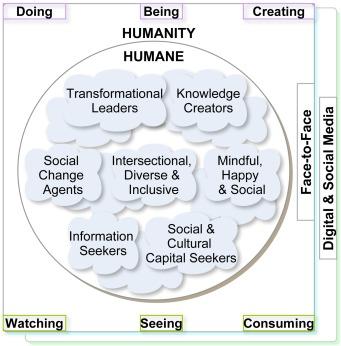10 Innovative Sustainable Technologies Revolutionizing Educational Settings
As environmental consciousness continues to rise,educational institutions are at the forefront of adopting sustainable technologies that not only enhance learning experiences but also reduce ecological footprints.From smart classrooms to renewable energy solutions, these innovative advancements are carving the path toward a greener, more efficient, and tech-savvy future for schools and universities worldwide.
introduction: The Shift towards Sustainable Technology in Education
In today’s rapidly evolving landscape, the intersection of sustainability and educational technology (EdTech) is more vital than ever. Administrators, teachers, and students are witnessing the benefits of integrating sustainable practices—leading to healthier, cost-effective, and future-ready educational environments. In this article, we delve into 10 innovative sustainable technologies that are revolutionizing educational settings, boosting both student engagement and environmental stewardship.
The Benefits of Sustainable Technology in Educational Settings
- Reduced operating costs by minimizing energy, water, and material usage
- Healthier indoor environments with improved air quality and reduced pollutants
- Enhanced engagement and learning outcomes through immersive digital tools
- Promotion of environmental stewardship among students and staff
- Alignment with regulatory and social obligation standards
10 Game-Changing Sustainable Technologies in Education
1. Solar-Powered Classrooms
Harnessing solar energy is increasingly common in schools and universities worldwide. Solar panels installed on rooftops provide clean, renewable electricity to power campuses, lower electricity bills, and serve as real-world teaching tools for science and environmental studies. Solar-powered classrooms can operate independent of unreliable grids, especially in remote regions, ensuring uninterrupted learning.
2. Interactive E-Textbooks and Digital Curriculum
Digital textbooks and cloud-based learning platforms drastically reduce the need for printed materials, saving trees and reducing paper waste. These platforms offer up-to-date content,interactive multimedia,and collaborative tools. Schools save on costs while students gain convenient access to resources on any device.
3. Energy-Efficient LEAD Lighting and Smart Controls
Switching to LED lighting and implementing intelligent lighting controls (like motion sensors and daylight-harvesting systems) can considerably reduce energy consumption. These technologies not only lower maintenance costs but also improve the quality of learning spaces by providing optimal lighting conditions.
4. Green Building Materials and Modular Classrooms
Modern educational institutions are embracing sustainable construction with eco-friendly materials such as recycled steel, bamboo, and non-toxic paints. Modular classrooms built with green materials are flexible, fast to assemble, and minimize environmental impact. They offer excellent insulation, reducing heating and cooling costs.
5. IoT-Driven Smart Campuses
the Internet of Things (IoT) is linking devices, systems, and infrastructure for real-time monitoring and automation.Smart thermostats, occupancy sensors, and connected water systems optimize resource use, detect issues early, and ensure comfort—all crucial for sustainable educational settings.
6. Green Roofs and Living Walls
Many educational settings are installing green roofs and living walls that support plant growth. These features improve air quality, reduce heat island effects, and foster biodiversity. They also serve as dynamic outdoor classrooms where students can learn about biology, ecology, and sustainability hands-on.
7. Sustainable EdTech Devices
Companies are designing eco-friendly learning devices—such as energy-efficient tablets, recyclable laptops, and sustainable interactive whiteboards. These devices, frequently enough made from recycled plastics and built for extended lifespan, minimize electronic waste in schools and universities.
8. Water Conservation Technologies
Smart water management systems—such as low-flow fixtures, rainwater harvesting units, and leak detection sensors—help schools save water. Educational institutions implementing these technologies not only reduce utility bills but also teach students about the importance of responsible water stewardship.
9. virtual and Augmented Reality (VR/AR)
VR and AR technologies reduce the need for physical models, chemical reagents, and other disposable materials in classrooms. By creating immersive environments, students can safely explore scientific concepts, visit ancient sites virtually, and carry out otherwise costly experiments, all with minimal environmental impact.
10. Digital Collaboration Tools and Remote Learning Technologies
Platforms promoting remote learning and virtual collaboration (e.g., video conferencing, online whiteboards) enable schools to minimize transportation, reduce campus energy consumption, and offer education to a global audience. These tools are essential for building resilient, adaptive, and sustainable learning ecosystems.
Success Stories: Sustainable Technologies in Action
Pennsylvania State University’s Green Classrooms
Pennsylvania State University has implemented solar panels, IoT energy management, and digital textbooks, resulting in a 30% reduction in annual electricity costs and a notable decrease in paper use. Students actively participate in sustainability projects, boosting real-world skills and eco-awareness.
Singapore’s Green Mark Initiative
The Green Mark initiative transformed over 400 educational institutions in Singapore with green roofs, LED lighting, and eco-friendly building practices. These schools have seen lower operating costs, improved indoor air quality, and high student satisfaction scores.
Practical Tips for Implementing Sustainable Technologies
- Start Small: Initiate pilot projects such as LED retrofits or digital textbooks before scaling campus-wide.
- Engage Stakeholders: Involve teachers, students, and parents in planning and feedback for greater adoption success.
- Measure and Share Impact: Use data analytics to monitor savings and sustainability outcomes.Celebrate successes publicly.
- Seek Partnerships: Collaborate with EdTech companies and environmental organizations to access funding and expertise.
- provide Training: Equip staff and students with skills to leverage new technologies effectively and responsibly.
Conclusion: The Future of Sustainable Education
The integration of sustainable technologies in education is more than a trend—it’s a transformative movement positioning schools and universities as leaders of a greener future. By adopting and championing these innovations, educational settings not only foster cutting-edge learning experiences but also teach the vital lesson of environmental responsibility. As technology continues to evolve, so too will the opportunities for educators to revolutionize learning while building a sustainable world for generations to come.

